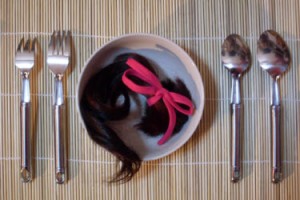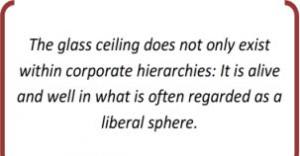-
Advocacy Theme
-
Tags
- Abortion
- Adoption
- Caregiving
- CEDAW
- Disability
- Domestic Violence
- Domestic Workers
- Harassment
- Healthcare
- Housing
- International/Regional Work
- Maintenance
- Media
- Migrant Spouses
- Migrant Workers
- Muslim Law
- National budget
- Parental Leave
- Parenthood
- Polygamy
- Population
- Race and religion
- Sexual Violence
- Sexuality Education
- Single Parents
- Social Support
- Sterilisation
- Women's Charter
Art tells stories, and women’s stories need telling
May 5th, 2010 | Events, External Campaigns, Gender-based Violence, News, Views
Women artists have been ignored for far too long, says TANIA DE ROZARIO. The void must be closed because art starts conversations and we need to have more conversations about the issues that matter to women.
 One night some time ago, while discussing what is generally seen as ‘gender-appropriate’ behaviour for women, my colleague Zarina and I decided we wanted to curate an all-female project dealing with the issue of femininity as a social construct. What resulted was Etiquette, a 10-day exhibition comprising 17 artists, 1 filmmaker and 2 curators; all women.
One night some time ago, while discussing what is generally seen as ‘gender-appropriate’ behaviour for women, my colleague Zarina and I decided we wanted to curate an all-female project dealing with the issue of femininity as a social construct. What resulted was Etiquette, a 10-day exhibition comprising 17 artists, 1 filmmaker and 2 curators; all women.
As both an artist and a feminist, I have learned to ignore the eye-rolling that ensues whenever I address the need to showcase more women in the industry. People don’t seem to equate the exclusion of women from the creative canon passed down through generations of aspiring Van Goghs and Da Vincis as the virtual erasure of a significant portion of history, nor do they see a need to close this void.
In a world where women face obstacles far more serious than not having a platform to showcase a painting, surely feminists have more important things to worry about than art, some might say. I disagree.
Why do I consider it important that female practitioners get as much of a shot at success as their male counterparts?
Because when musician Tori Amos released Me and a Gun, countless rape survivors found strength in that song, and sites like this were set up. Because when writer Nicole Blackman performed Holy, wo men surviving eating disorders wrote her e-mails pouring their hearts out. Because despite having her film set burned to the ground by two thousand protestors, and despite death threats and burned effigies , Deepa Mehta carried on creating Water, a film that addressed the plight of widows in India.
men surviving eating disorders wrote her e-mails pouring their hearts out. Because despite having her film set burned to the ground by two thousand protestors, and despite death threats and burned effigies , Deepa Mehta carried on creating Water, a film that addressed the plight of widows in India.
It is important that women thrive equally in relation to men in all creative spheres because art exists to tell stories about the world we inhabit, and because women’s stories need to be told.
What struck me over the course of putting Etiquette together were the topics artists of different ages and backgrounds kept bringing up – childhood, language, media, sexuality, appearance. Starting conversations about these issues is fundamental to feminism. And art, in all its forms, has the power to start conversations.
It is a common misconception that equality has been achieved simply because women are now freer to work in areas from which they were previously disallowed. Look behind these cosmetic equalities –at policies, payrolls and politics- and one is sure to be appalled. When Linda Nochlin published the groundbreaking Why Have There Been No Great Women Artists? in 1971, female artists had already started asserting themselves within an industry that, for the longest time, had been male-dominated. Since then, so much, and yet almost nothing, has changed. See for yourself.
Our local scene is no different. I shudder when I look at the percentage of women who have represented Singapore at the Venice Biennale; at the state of institutions still run like boys clubs; at the number of women represented by commercial galleries; at my own experiences as a practitioner. The glass ceiling does not only exist within corporate hierarchies: It is alive and well in what is often regarded as a liberal sphere.
NOTE: Following the exhibition, a number of artists decided to donate a percentage of their sales proceeds to AWARE. Zarina and I hope to extend Etiquette into an ongoing project that includes an online gallery and, starting from mid-May, a rotation of works from the show at the AWARE Centre, with 50% of sales going to the organization. In the meantime, sign up for AWARE’s inaugural Film Night when we’ll be screening An Education, a critically-acclaimed film by a female director. Let’s have a conversation about it after that.
3 thoughts on “Art tells stories, and women’s stories need telling”
Comments are closed.




It was rather intriguing to hear all the different responses to Etiquette. What troubled me most was the immediate equation of a show comprising of all women to a stereotypical notion of what kind of art will (or should) be on display.
A certain burden, almost an expectation to be extremely aggressive & to address gender (& nothing else).
similarly, i was disturbed by how hard certain writers wanted to label the show as problematic. and conveniently leave out the overall and broader look of the show. such writers are over-zealous and make use of anti-feminism theories to debunk some artworks without realizing and understanding the processes. wished these writers had put their talent to better use and read more on feminist theory to address the artworks in the show instead of wasting opportunities and strength not to mention being unecessarily heated up, on writing critically well. instead these writers turned out immature and made me think, maybe they are just angry at women and objectify women negatively.